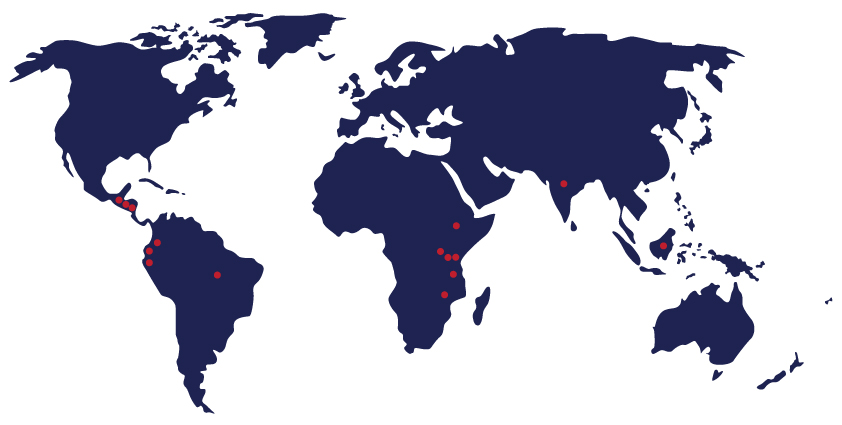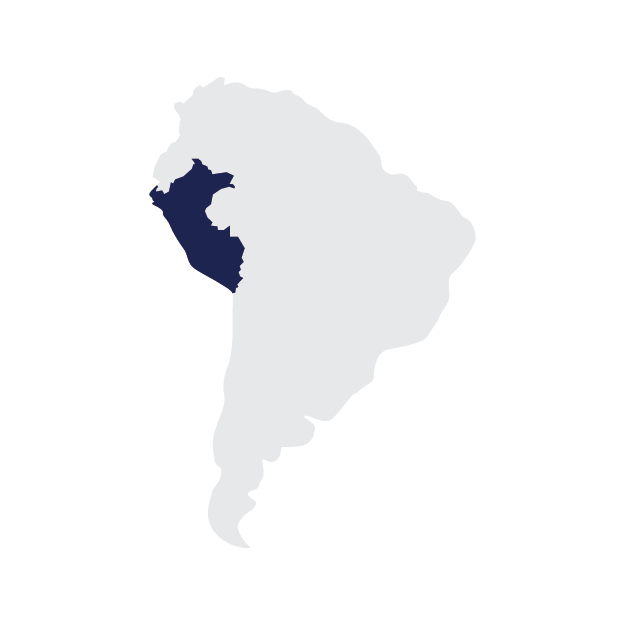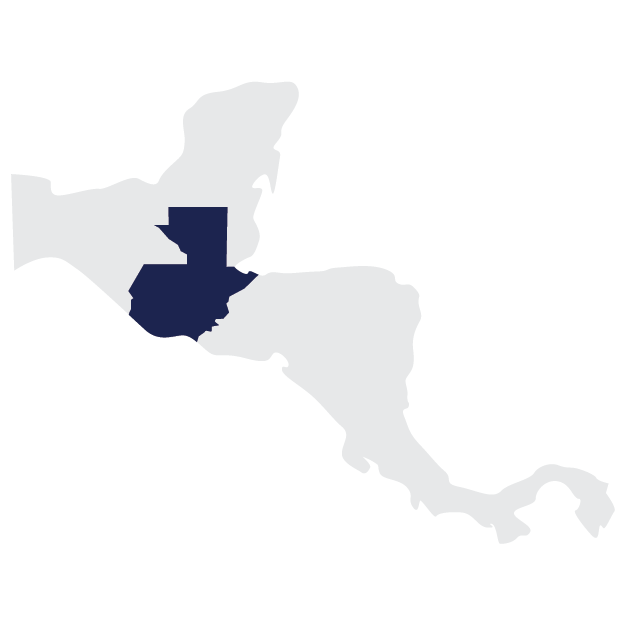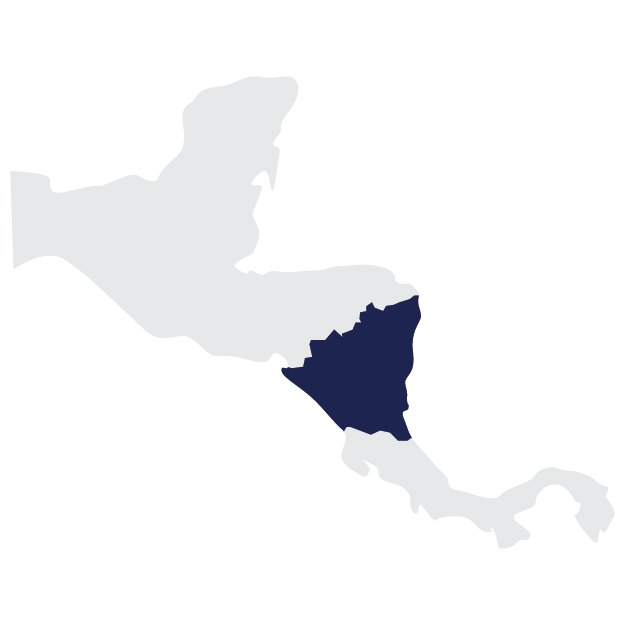Green Beans
choose between a wide range of premium qualityWe offer you a wide range of premium quality green beans from all the major coffee regions across the world. As part of the harvesting process, coffee beans must be removed from the fruit and dried before they can be roasted. This can be done in two ways, known as the dry and the wet methods.
DRY METHOD
The dry method or natural method is the simplest and oldest method and requires little machinery.
The method involves drying the whole cherry. Depending on the size of the plantation and the facilities available this method may be carried out in various ways. The three basic steps include cleaning, drying and hulling.
Firstly, the harvested cherries are usually sorted and cleaned, to separate the unripe, overripe and damaged cherries and to remove soil and twigs. The coffee cherries are spread out in the sun. As the cherries dry, they are raked or turned by hand to ensure even drying.
The dried cherries are then stored in bulk in special silos until they are sent to the mill where hulling, sorting, grading and bagging take place. All the outer layers of the dried cherry are removed in one step by the hulling machine.
The dry method is used for about 90 percent of the Arabica coffee produced in Brazil, most of the coffees produced in Ethiopia, Haiti and Paraguay, as well as for some Arabicas produced in India and Ecuador.
WET METHOD
The wet method or washed method requires the use of specific equipment and substantial quantities of water. When properly done, it ensures that the inherent qualities of the coffee beans are better preserved, producing a green coffee which is homogeneous.
After sorting and cleaning, the pulp is removed from the cherry. This operation is the key difference between the dry and the wet methods, since in the wet method the pulp of the fruit is separated from the beans before the drying stage. The pulping is done by a machine which squeezes the cherries between fixed and moving surfaces. The flesh and the skin of the fruit are left on one side and the beans. After drying, the wet-processed coffee, or parchment coffee as it is commonly known, is stored and remains in this form until shortly before export.
The final stages of preparation of the coffee, known as ‘curing’, usually take place at a special plant just before the coffee is sold for export. The coffee is hulled, to remove the parchment, then passes through a number of cleaning, screening, sorting and grading operations.
The wet method is generally used for Arabica coffees, with the exception of those produced in Brazil and the Arabica-producing countries mentioned above as users of the dry method.
You can be assured that the green beans we source adhere to strict international specifications according to:
- Altitude
- Region
- Botanical variety
- Preparation method (wet vs dry)
- Bean (screen) size
- Bean shape and colour
- Number of defects
- Permissible defects
- Bean density
- Cup quality
GREEN BEAN PROFILING
There are three main growing regions: Africa, Indonesia, and Central to South America.

SOUTH AMERICAN
There are three main growing regions: Africa, Indonesia, and Central to South America.

Colombia
Coffee was introduced to Colombia in the early 1800’s and has a wide variety of cultivars. They jockey for the number coffee producer in the world, but loose it to Brazil. Columbian coffee is a traditional dark-roast coffee with a strong memorable flavour.

Brazil
The number one producer of coffee in the world. They offer a medium-roast bean with low acidity from the center of the coffee world. The coffee has a heavy, syrupy body with a hint of tobacco flavour – a great component for an espresso blend.

Peru
Peru is mostly known for its organically grown coffee. They offer a good balanced coffee that can be used in blends.
CENTRAL AMERICA

Guatemala
This strictly hard bean is grown at altitudes of 4500 or higher. Guatemala is a medium to full bodied coffee in the cup, often with depth and complexity in taste, almost spicy and chocolaty to the tongue.

Honduras
This is generally a well-regarded blending coffee. When roasted, the cup is less acidic, with a sweet caramel flavour.

Nicaragua
Some Nicaraguan coffees are among the best in the world. When roasted, the cup is mild with a light acidity and very well balanced.
AFRICA

Tanzanian
The coffee is grown together with bananas for shade and can be superb. When roasted, the beans are sweetly acidic, aromatic and intensely flavoured.

Burundi
The first Arabica coffee tree was introduced in Burundi by the Belgians in the early 1930’s. When the beans are roasted, it has a complex and sometimes creamy flavour with a high acidity.

Ethiopian
This is where coffee originated and many legends exist on how, where and why it has been cultivated, dating even as far back as the 9th century. This coffee is shade grown and mostly grown in the traditional organic method. It is not hard to believe that coffee originated in a land where wild coffee tree forests are still the primary source of harvested coffee. They are the 2nd largest coffee producer in Africa and 7th in the world. When roasted, the beans have a fruity aroma and are winy with a sparkling acidity.

Malawi
They have one of the most sought after coffees in the world. When roasted, it is soft, floral and delicate.

Uganda
They mostly grow Robusta coffees, but Arabica coffee is grown in Bugishu and is well worth looking out for. When the beans are roasted, it has a tart acidity and some winy components.

Kenya
One of the finest coffees available and well known for its strong flavour, good aroma and acidity. When roasted, the beans have a bright acidity and are full-bodied.
ASIA

Indonesian
Coffee is produced throughout the Indonesian archipelago, and Java is one of the great names of the coffee history. When the beans are roasted, it has a well-balanced acidity and are rich, full bodied with ripe fruit undertones and chocolaty.

India
They are known for monsooning their coffees. A process that is recreated naturally in order copy the flavour and taste profiles created by the exposure the beans have during the high humidity in monsoon seasons on original journeys by ship. The coffee has a delicate hint of spice and a good body.
SPECIALITY GREEN COFFEE
Jamaican Blue Mountain
This is a classification of coffee grown in the Blue Mountains of Jamaica. The best lots of Blue Mountain coffee are noted for their smooth, balanced, mild and subtlety in flavour and lack of bitterness. Over the last several decades, this coffee has developed a reputation that has made it one of the most expensive and sought-after coffees in the world.
Guatemala Antigua
One of the very best coffees available and strictly a high bean. It is full bodied and deliciously balanced with a spicy and complex cup.
ORGANIC
Organic beans are beans that have been produced without the use of pesticides or herbicides. When roasted, it is smooth, with a slight acidity and balanced flavour.
DECAFF
Decaffeinated coffee or “decaf” is coffee that has had most of the caffeine removed. Commercially, there are two methods used to remove caffeine from coffee.
European Process
This process originated in Europa and is the mostly used. It involves soaking the beans in water and then “washing” them in methylene
chloride to absorb the caffeine from the bean. Then the beans are rinsed clean of the chemicals, dried and shipped to the coffee roasters. This method provides decaf coffee with more flavour than the Swiss water processing. Although there is almost no trace of any chemicals left in the bean after roasting, some people are uncomfortable knowing that the coffee they are drinking was chemically processed.
Swiss Water Process
The second method is known as “Swiss water processing”. This process uses hot water and steam to remove the caffeine from the coffee instead of chemicals. The “life” of the bean is taken into the water, and then the water solution put through activated charcoal filters to remove the caffeine. Once the caffeine is removed, these same beans are then put back into the decaffeinated solution to re-absorb everything except the caffeine. The beans are then dried and shipped to the roasters. The disadvantage is that the water processing removes more than just the caffeine. Some of the oils from the coffee bean are removed as well, making it less flavourful.
We do a blend of 3 or 4 different types of Decaff coffees using the Swiss water process.
